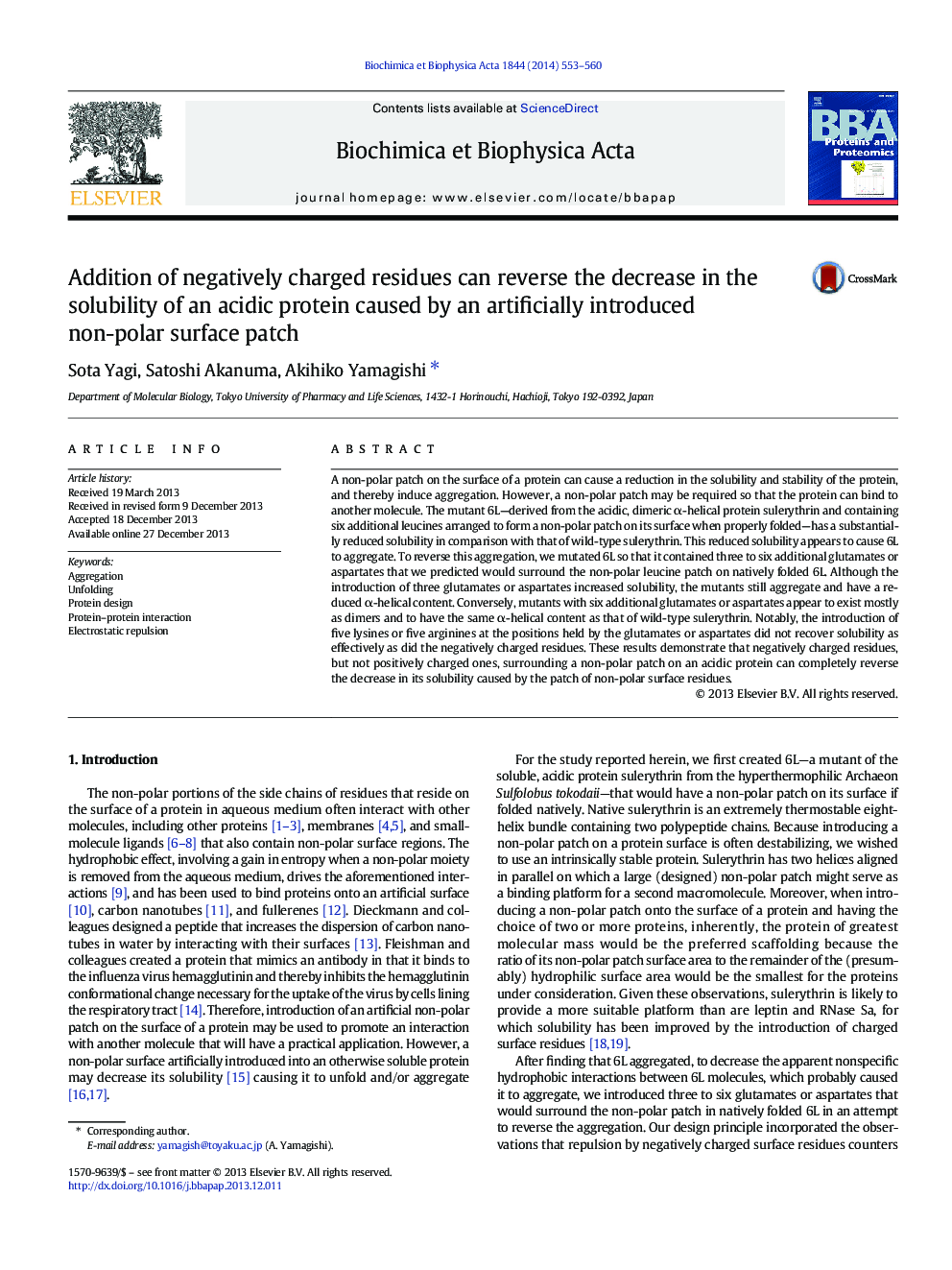| Article ID | Journal | Published Year | Pages | File Type |
|---|---|---|---|---|
| 10536933 | Biochimica et Biophysica Acta (BBA) - Proteins and Proteomics | 2014 | 8 Pages |
Abstract
A non-polar patch on the surface of a protein can cause a reduction in the solubility and stability of the protein, and thereby induce aggregation. However, a non-polar patch may be required so that the protein can bind to another molecule. The mutant 6L-derived from the acidic, dimeric α-helical protein sulerythrin and containing six additional leucines arranged to form a non-polar patch on its surface when properly folded-has a substantially reduced solubility in comparison with that of wild-type sulerythrin. This reduced solubility appears to cause 6L to aggregate. To reverse this aggregation, we mutated 6L so that it contained three to six additional glutamates or aspartates that we predicted would surround the non-polar leucine patch on natively folded 6L. Although the introduction of three glutamates or aspartates increased solubility, the mutants still aggregate and have a reduced α-helical content. Conversely, mutants with six additional glutamates or aspartates appear to exist mostly as dimers and to have the same α-helical content as that of wild-type sulerythrin. Notably, the introduction of five lysines or five arginines at the positions held by the glutamates or aspartates did not recover solubility as effectively as did the negatively charged residues. These results demonstrate that negatively charged residues, but not positively charged ones, surrounding a non-polar patch on an acidic protein can completely reverse the decrease in its solubility caused by the patch of non-polar surface residues.
Related Topics
Physical Sciences and Engineering
Chemistry
Analytical Chemistry
Authors
Sota Yagi, Satoshi Akanuma, Akihiko Yamagishi,
